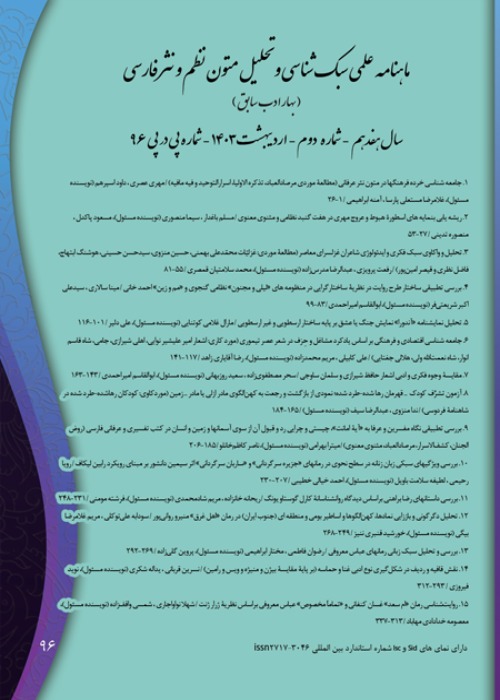Discourse analysis of endowments belonging to the Qajar period in the Markazi provinces of Kermanshah
Documents as one of the most important sources of historical research are of special importance; Because they are one of the most reliable means of communication with the past. This study aims to achieve the semantic and ideological underlying layers, find the dominant discourse and explain the cultural, social and situational factors in the endowments belonging to the Qajar period in the central provinces and Kermanshah to study and analyze these texts. The researcher believes that endowments are very valuable documents; However, due to their unavailability, they have been neglected by researchers and researchers; While research on these texts can not only clarify the various dimensions of the issue of endowment, but also provide other valuable information to researchers and those interested in research on historical texts. In fact, this study seeks to answer a few key questions; Including what values do words have ideologically? Is there a connection between word and meaning in endowments? What is the discourse that governs the endowments and the most important motivations of the endowments of that period? And were cultural, social, and geographical factors reflected in the endowments?
The statistical population of this study is 361 copies of endowments belonging to the Qajar period in the Documentation Center of the General Endowments and Charities of Markazi and Kermanshah provinces, of which 196 endowments belong to Markazi province and 165 documents belong to Kermanshah province. The research method in this research is descriptive-analytical, which is quantitative in the stage of describing words in terms of method and analytical frameworks. In the interpretation stage, the qualitative aspects of the text are also considered.
Endowments interact with each other at the levels of description and interpretation; Because literature and rhetoric serve political, social, and religious purposes, ideological beliefs have emerged in the structure of language.
At the level of word description, the use of semantic inclusion and semantic contrast has been very effective in enhancing the creation of semantic relationships in the linguistic structure. Dominant discourse in the introduction of most of the endowments studied can be considered philosophical, theological, jurisprudential and religious discourses and in the description and expression of details and how to use and maintain endowments, it can be considered a social and cultural discourse. In terms of interpretation, the text of endowment letters has been most influenced by the Holy Quran and hadiths.
- حق عضویت دریافتی صرف حمایت از نشریات عضو و نگهداری، تکمیل و توسعه مگیران میشود.
- پرداخت حق اشتراک و دانلود مقالات اجازه بازنشر آن در سایر رسانههای چاپی و دیجیتال را به کاربر نمیدهد.


